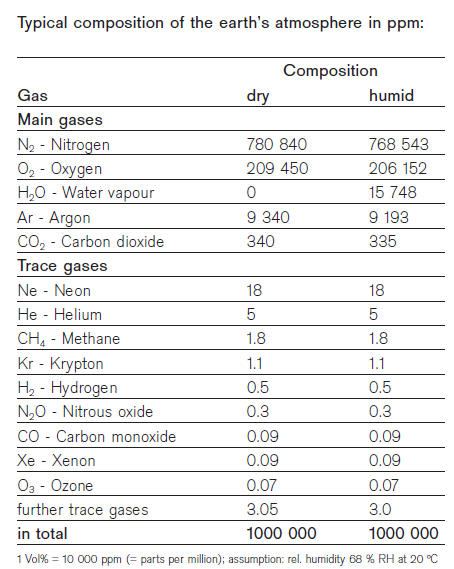from Dräger Introduction to Gas Detection Systems (click on the title to view the complete article) Draeger / Drager
A gas detection system’s reliability is not only dependent on the properties and performance of the equipment, but also depending on installation, operation and maintenance – and especially the proper positioning of sensors. Naturally, sensors can only detect a gas when the sensor is within the gas cloud. Incorrect sensor positioning results in a useless gas detection system.
Gas leaks can arise e.g. when cold liquefied and/or pressurized gases are released into the ambient air, and get mixed with it. Their concentration decreases, and the gas dispersion depends more on the current temperature conditions and ambient air convection than on the density of the pure gas.
Three Rules of Thumb:
- There are only three flammable gases which are considerably lighter than air: Hydrogen (H2), Ammonia (NH3), and Methane (CH4). Commonly mixtures of these gases rise up.
- Vapours of flammable liquids are always heavier than air –they flow downwards as long as they are not disturbed by air convection.
- Independent of the density of the pure gas, gas concentrations of less than 1000 ppm in air virtually have the same density than air. Dispersion of concentrations like
this will rather follow the current temperature profile and air convection.
Positioning strategy:
Having the sensors as close as possible placed at the potential leak surely is the optimum way. Leaks may arise from pumps, valves, flexible tubes and their connections, flanges, shut-off devices, bellows, etc. If such locations cannot easily be identified, sensors need to be distributed over the entire hazardous area (area monitoring). It is essential that the target gas always can reach the sensor at operational conditions within a given time interval. The local conditions of the individual hazardous areas are so very different that there are no regulatory standards where to place a sensor, but useful guidelines exist (e.g. the EN 50073 or IEC 60079-29-2).
https://analyzedetectnetwork.com

